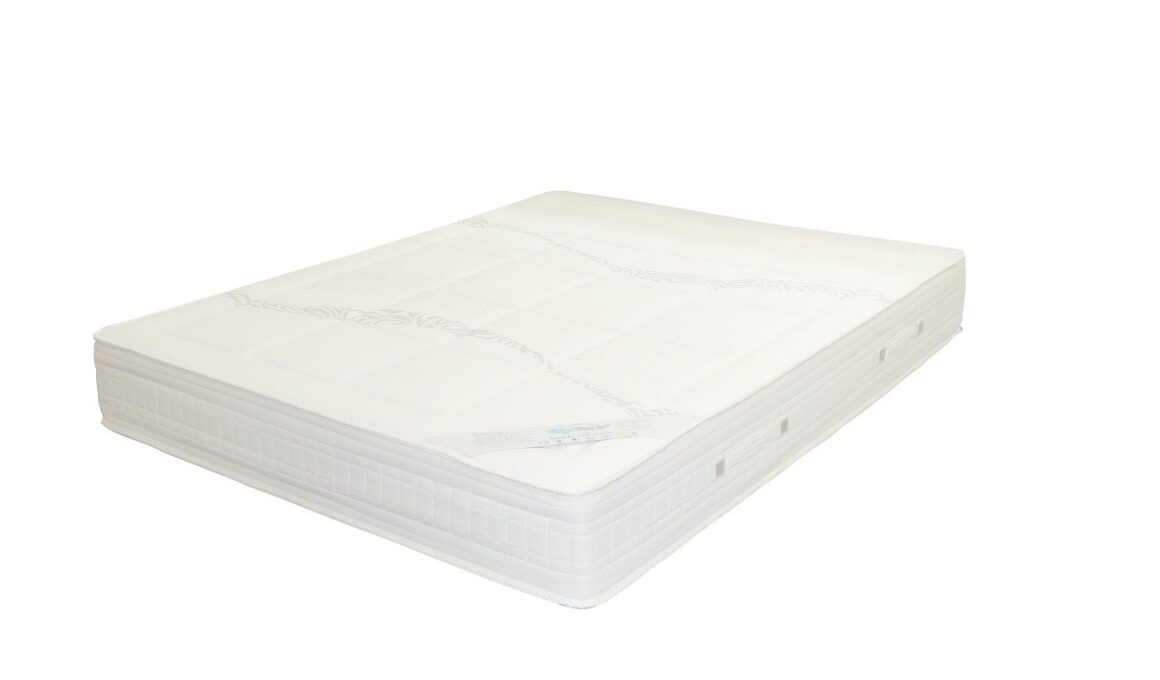Understanding Mattress Firmness and Its Effect on Ergonomics
When it comes to choosing the right mattress, understanding firmness is critical. The level of firmness affects your spinal alignment while sleeping, thereby influencing overall ergonomics. A mattress that’s too soft can lead to improper posture, resulting in pain upon waking. The excess sinkage may cause your lower back to sag, creating misalignments that affect your daily activities. On the other hand, a mattress that’s too firm can push against pressure points, making it uncomfortable. Therefore, selecting an optimal firmness that matches your body type and sleep position is essential. Experts recommend trying different mattress types in stores to identify personal comfort levels. Moreover, individuals with specific health conditions should consult healthcare professionals for tailored advice when choosing a mattress. Research shows that sleeping on a mattress that suits your unique requirements minimizes discomfort and enhances sleep quality. Understanding your individual sleep needs can be very beneficial. Considerations such as weight, preferred sleeping position, and material preferences play pivotal roles in selecting a mattress. Thus, it is crucial to conduct thorough research to understand your needs before purchasing a mattress.
Another important factor when considering mattress firmness is the impact of sleep position. Side sleepers often require a softer surface to accommodate the contours of their body and relieve pressure at the hips and shoulders. A mattress that is too firm can lead to increased pain in these areas. Conversely, back sleepers typically benefit from a medium to firm mattress that supports the natural curve of the spine. Firmness aids in proper spinal alignment, thus reducing tension in the back and neck. Stomach sleepers, on the other hand, usually need a firmer mattress to prevent their body from sinking uncomfortably into the surface, which can lead to back strain. Each sleeping position entails different requirements for support and comfort. Therefore, mattress firmness should be matched with sleeping preferences, ensuring the mattress can accommodate the sleeper’s shape and weight distribution effectively. Ensuring the alignment of the spine is critical in mitigating future orthopedic issues. Thus, it is vital to consider these sleep positions while evaluating mattress options. A tailored approach can lead to improved sleep hygiene and better ergonomics.
The Role of Material in Firmness
The material of a mattress significantly contributes to its firmness levels. Memory foam mattresses, for instance, tend to provide a softer feel, contouring to the body’s shape. This characteristic can be beneficial for those who require pressure relief. However, the softer feel might not provide sufficient support for heavier individuals, potentially compromising alignment. In contrast, latex mattresses tend to be more resilient, offering a firmer sleeping surface while still providing responsiveness. This can be particularly useful for those who require a balance between cushioning and support. In addition to these options, innerspring mattresses are also prevalent. Their firmness is determined by coil gauge and construction. A higher gauge generally indicates a softer mattress, while a lower gauge leads to a firmer feel. Choosing a mattress made from high-quality materials is also crucial. Not only does it influence comfort, but it also enhances durability. Thus, the role of material in firmness cannot be overlooked when making a decision. Doing so can help improve not just sleep quality but overall health and ergonomics.
Moreover, understanding firmness levels may involve assessing personal comfort preferences and identifying how they align with mattress material types. Each person has a unique sense of comfort, influenced by individual experiences and body types. Therefore, opinions on firmness can vary widely. Some may prefer a plush top layer that provides a gentle hug, while others may appreciate the underlying support of a firmer foundation. To determine the right level of comfort, consider visiting showrooms to physically test various mattresses. Many retailers allow customers to lie down on different surfaces for a few minutes. It can provide insights into what feels right. Additionally, many online retailers now offer home trials, allowing for an extended test period. This can help assess how well the mattress caters to ergonomic needs. Remember that your sleeping habits may evolve over time. From back pain to changing preferences, the decision should reflect current needs. Thus, the selection process should remain open to change, recognizing comfort preferences may shift, leading to better sleep hygiene and health outcomes.
Understanding Support versus Comfort
It is essential to understand the distinction between support and comfort when choosing the right mattress. Support refers to how a mattress maintains proper spinal alignment, while comfort relates to the feel of the mattress. A mattress might be highly comfortable but lack necessary support and vice versa. This dichotomy can create a challenge when selecting an ideal mattress. It is crucial to identify personal comfort while ensuring adequate support for your body. If a mattress does not support proper alignment, various health issues may arise, including chronic pain, tension, and fatigue. Ensuring a balance between these aspects can lead to improved sleep quality and overall ergonomics. A satisfied sleeper frequently experiences less pain and discomfort, which helps in maintaining better daylight productivity. Therefore, understanding this interplay is vital. Remember that personal preferences and body types significantly impact what is considered a comfortable yet supportive mattress. By assessing personal needs and preferences, you can find a mattress that supports better postures and sleep hygiene. Investing in the right mattress is investing in your overall well-being.
To enhance the ergonomic benefits of a mattress, consider the role of adjustable bases. They allow for personalization of your sleeping surface by accommodating various positions. This capability can aid individuals with specific needs, such as those suffering from sleep apnea or acid reflux. An adjustable base can help raise the upper body or the legs, promoting optimal sleeping conditions and reducing discomfort. Integrating such features can significantly impact sleep quality and overall bodily alignment. Furthermore, while setting up an ergonomic environment, do not overlook other factors such as pillow selection and bedding materials. The right pillow complements the mattress and further contributes to spinal alignment. Additionally, high-quality sheets and blankets can enhance comfort during sleep. Individuals should consider the overall bedding ensemble for complete ergonomic support. Appropriate choices promote comfort while contributing to a better sleeping habitat. Investing time and effort into creating a well-thought-out sleeping environment can yield long-term benefits. Ultimately, prioritizing a comprehensive grasp of various factors influencing mattress choice ensures healthier sleep and achievability of ergonomic goals.
Conclusion: Steps to a Better Mattress Choice
In conclusion, selecting the right mattress involves thoughtful consideration of firmness, material, and support. Recognizing the differences between comfort and support is essential in making an informed choice. Each factor plays a significant role in achieving better ergonomics while sleeping. While every individual has unique preferences, recognizing body type and sleep position can simplify the decision-making process. Testing mattresses in stores or utilizing online trial options can help uncover the best choice. By considering how various materials and firmness levels affect overall comfort, buyers can take proactive steps towards better health. Additionally, integrating adjustable bases and quality bedding further enhances the sleeping environment. This conscious prioritization of sleep hygiene and ergonomics fosters overall wellness. The steps to selecting a mattress achieving proper firmness and support ensures that long-term health concerns are addressed. Continuous research and introspection of personal comfort preferences help navigate this journey effectively. The overall goal is to improve restful sleep, enhance productivity, and promote better health outcomes. In combining knowledge about mattresses with personal needs, individuals can invest wisely in their sleep experiences.
When it comes to choosing the right mattress, understanding firmness is critical. The level of firmness affects your spinal alignment while sleeping, thereby influencing overall ergonomics. A mattress that’s too soft can lead to improper posture, resulting in pain upon waking. The excess sinkage may cause your lower back to sag, creating misalignments that affect your daily activities. On the other hand, a mattress that’s too firm can push against pressure points, making it uncomfortable. Therefore, selecting an optimal firmness that matches your body type and sleep position is essential. Experts recommend trying different mattress types in stores to identify personal comfort levels. Moreover, individuals with specific health conditions should consult healthcare professionals for tailored advice when choosing a mattress. Research shows that sleeping on a mattress that suits your unique requirements minimizes discomfort and enhances sleep quality. Understanding your individual sleep needs can be very beneficial. Considerations such as weight, preferred sleeping position, and material preferences play pivotal roles in selecting a mattress. Thus, it is crucial to conduct thorough research to understand your needs before purchasing a mattress.


